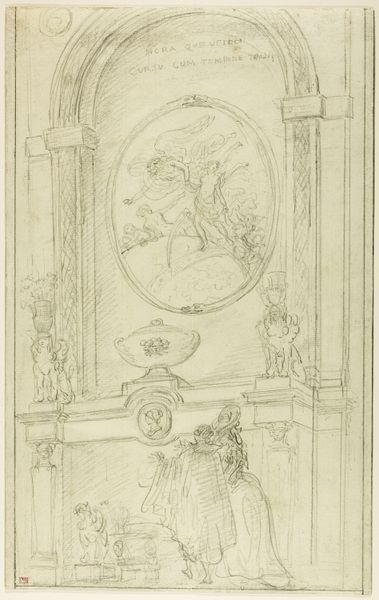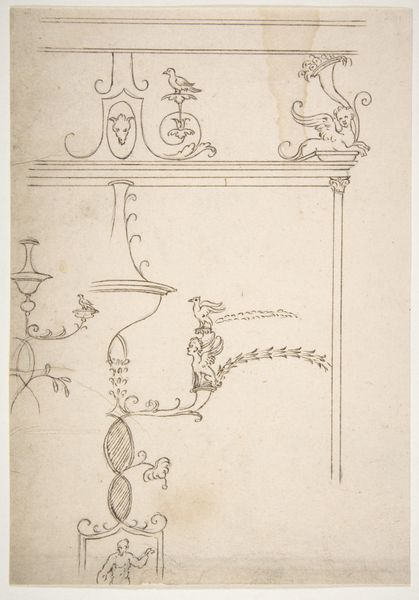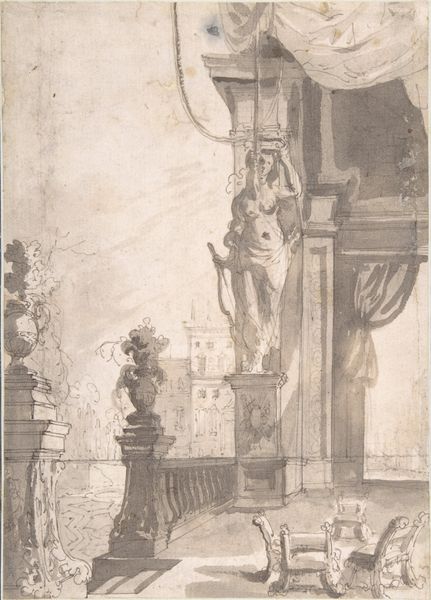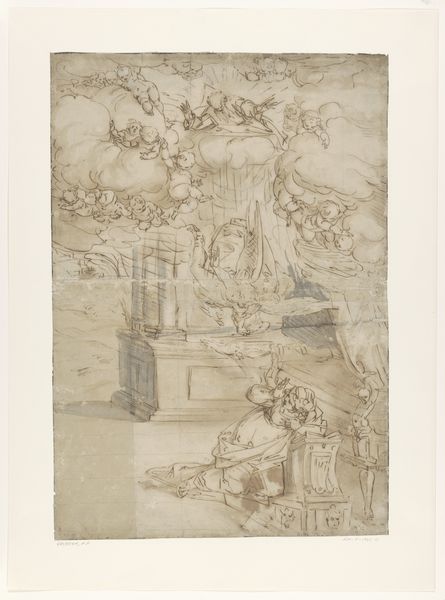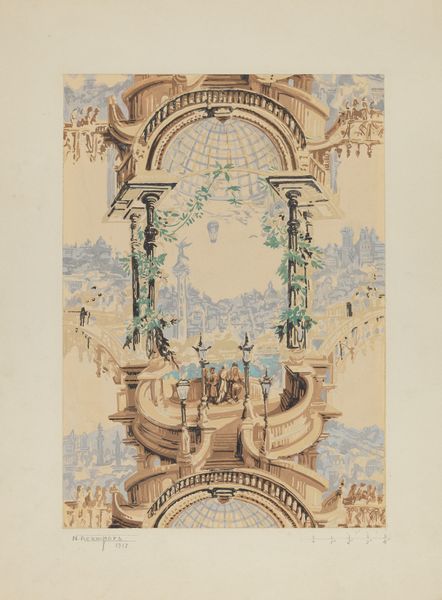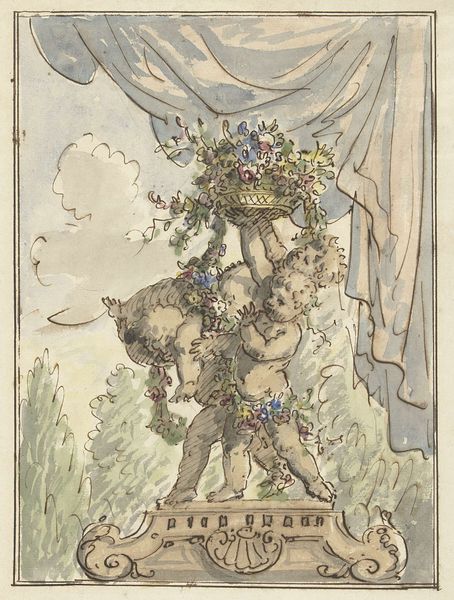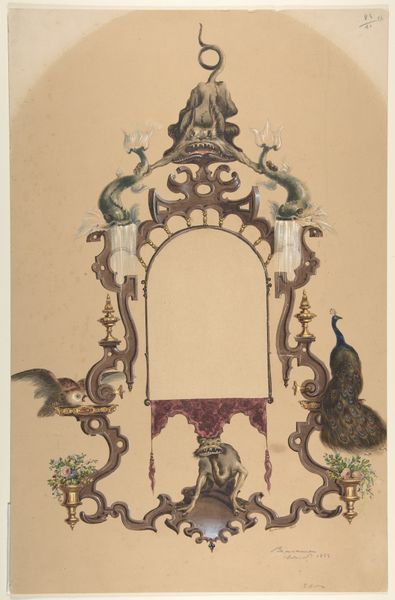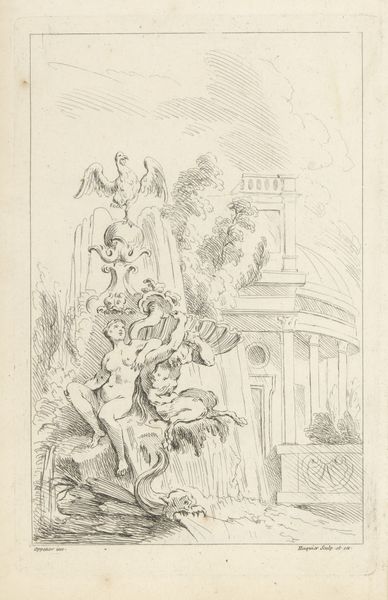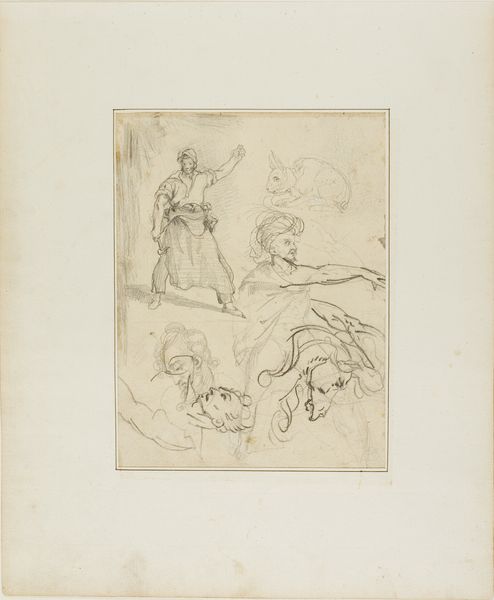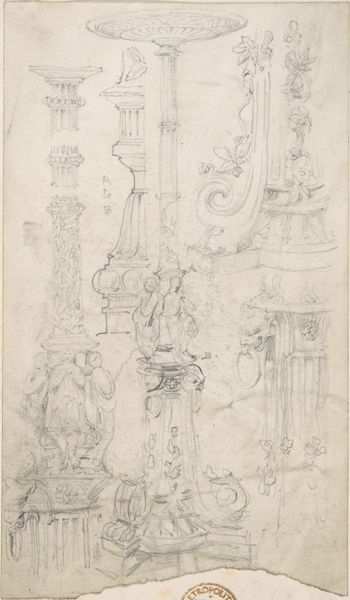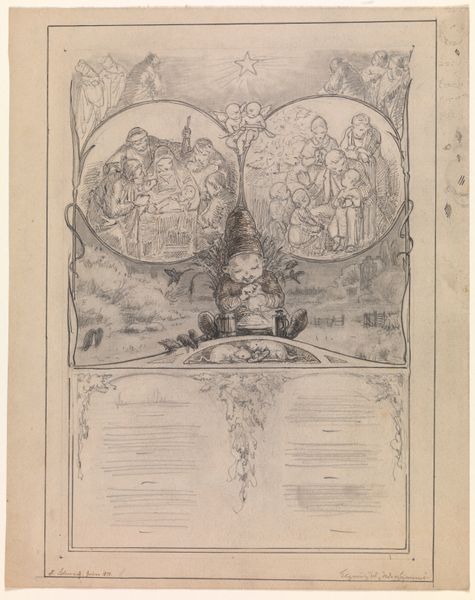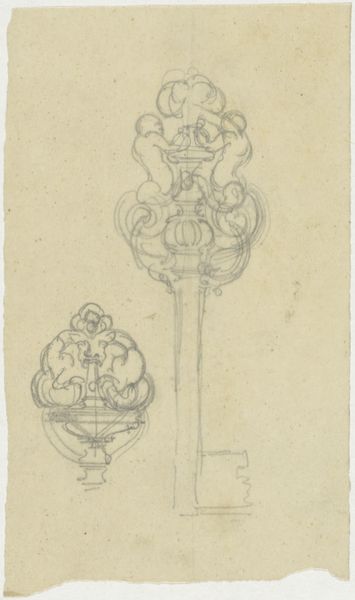
Design for an Altarpiece with a Figure of St. Sebastian 1741
0:00
0:00
drawing, coloured-pencil, print, paper, pendant
#
drawing
#
coloured-pencil
#
baroque
# print
#
figuration
#
paper
#
coloured pencil
#
watercolour illustration
#
history-painting
#
pendant
Dimensions: sheet: 20 1/4 x 13 11/16 in. (51.4 x 34.8 cm)
Copyright: Public Domain
Curator: Looking at this piece, what strikes you first? Editor: Definitely the color palette—it's soft, almost pastel. There's a real sense of the ethereal, even though it’s architectural. It also strikes me how unfinished it seems; a partial design. Curator: It is. What we're viewing is Joseph Anton Feuchtmayer's "Design for an Altarpiece with a Figure of St. Sebastian," created around 1741. The artwork presents itself through the mediums of drawing and colored pencil on paper and is held at the Metropolitan Museum of Art. It really showcases Feuchtmayer’s grasp of the Baroque style. Editor: Knowing it's Baroque, that sense of the dramatic and ornate becomes clear. And the unfinished quality—does that tell us anything about its purpose, its commission perhaps? Was it typical to only present a partial idea in the 18th century? Curator: Often, these presentation drawings served to illustrate to patrons the overall intention for the altarpiece. Only committing parts of it would provide a way to reduce revisions in costs if part of the whole piece wasn't agreeable. You see St. Sebastian, a popular figure due to his perceived ability to ward off plagues, elevated prominently, almost floating above the design’s midpoint. Editor: So St. Sebastian, forever a symbol of resilience in the face of persecution, anchors this exuberant design. I like the juxtaposition of his suffering with the joyous, almost celebratory architecture around him, don't you think? Also the sensuality... these cherubs don't seem very 'religious'! Curator: The sensuality is a hallmark of Baroque art and speaks to the period's fascination with emotion. This intersection with idealized forms makes this image so Baroque in aesthetic sensibility. The altar and the statues are designed to inspire the patron to imagine themselves lifted from their present and closer to an imagined glory and beauty in heaven. It certainly inspires the imagination, even after centuries. Editor: Definitely. The use of color here also adds to that lifting. These are soft and airy colors that almost anticipate Rococo but feel distinctly baroque in expression. This reminds us that art exists at crossroads. I appreciate knowing the social context from which this was generated. Thanks for illuminating that! Curator: Thank you! Analyzing the artwork’s production, its cultural milieu really underscores its lasting power. It demonstrates not only artistic vision but also the societal role art plays in representing belief systems and politics.
Comments
No comments
Be the first to comment and join the conversation on the ultimate creative platform.
